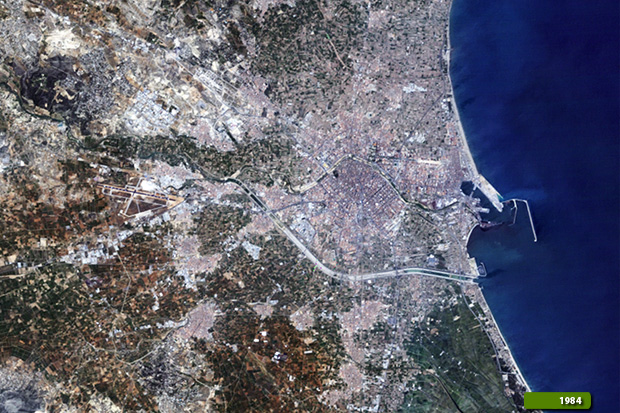|
Valencia, Spain
Valencia, is the capital of the autonomous community of Valencia and the third largest city in Spain after Madrid and Barcelona, with around 800,000 inhabitants in the administrative centre. Its urban area extends beyond the administrative city limits with a population of around 1.5 million people. Valencia is Spain's third largest metropolitan area, with a population ranging from 1.7 to 2.5 million. The city has global city status. The Port of Valencia is the 5th busiest container port in Europe and busiest container port on the Mediterranean Sea. Valencia was founded as a Roman colony in 138 BC. The city is situated on the banks of the Turia, on the east coast of the Iberian Peninsula, fronting the Gulf of Valencia on the Mediterranean Sea. Its historic centre is one of the largest in Spain, with approximately 169 hectares; this heritage of ancient monuments, views and cultural attractions makes Valencia one of the country's most popular tourist destinations. Major monuments include Valencia Cathedral, the Torres de Serranos, the Torres de Quart, the Llotja de la Seda (declared a World Heritage Site by UNESCO in 1996), and the Ciutat de les Arts i les Ciències (City of Arts and Sciences), an entertainment-based cultural and architectural complex designed by Santiago Calatrava and Félix Candela. The Museu de Belles Arts de València houses a large collection of paintings from the 14th to the 18th centuries, including works by Velázquez, El Greco, and Goya, as well as an important series of engravings by Piranesi. The Institut Valencià d'Art Modern (Valencian Institute of Modern Art) houses both permanent collections and temporary exhibitions of contemporary art and photography. Valencia is integrated into an industrial area on the Costa del Azahar (Orange Blossom Coast). Valencia's main festival is the Falles. The traditional Spanish dish, paella, originated in Valencia. More information is available on Wikipedia

Today we feature Valencia; located in eastern Spain it is capital of Valencia autonomous region and of Valencia Province. Built on a fertile plain near the mouth of the Tura River in the Mediterranean Sea, it is one of the largest cities in Spain and a centre for agricultural marketing, manufacturing, and communications. Industrial establishments in the city include textile mills, chemical works, metalworks, shipyards, and breweries. Valencia is the centre of an archbishopric. It is also the site of the University of Valencia (founded in 1499) and the Polytechnic University of Valencia (founded in 1968). A museum of fine arts and an art school are located in the city. Two gates remain from the 14th-century city walls built on Roman foundations. Among important buildings in Valencia are the Gothic cathedral (13th-15th century) and the 15th-century Gothic silk exchange which, in 1996, was designated a UNESCO World Heritage Site. These two images captured by the Landsat 5 and Landsat 8 satellites with a time window (before / after) of 31 years, aim to show the urban development in this time window along the Tura River and in the centre of city, but in particular these images show a clear increase in the development of the harbour area. Another aim of these images is to promote the opportunity to download Landsat data through the ESA portals, where images captured every day are made available in near real time to the users and the scientific community. Landsat full resolution data products are freely available for immediate download at: 
View large format slider View Landsat 8 OLI high resolution image (JPG 1 MB)
|
|||||||||||||||||||||

